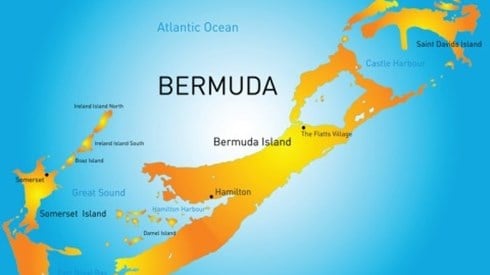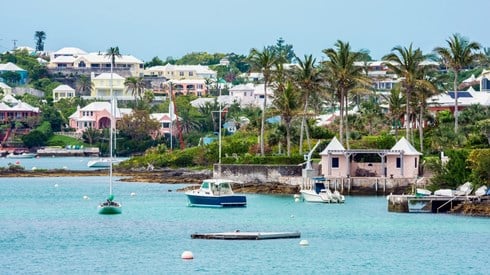Bermuda Regulators Work To Keep Pace with Captive Insurance Innovation

December 13, 2023

As Bermuda's captive insurance industry continues to use captives in new ways and to address emerging exposures, the Bermuda Monetary Authority (BMA) continues to work to provide a suitable supervisory framework to address emerging structures.
"The Bermuda insurance market is synonymous with innovation. With the redefined uses of current captives and the exploration and establishment of new insurance solutions designed to cover emerging risks, the Authority has seen a number of innovative captive insurance structures being developed, such as those to combat losses impacting vulnerable communities or jurisdictions," the BMA says in its newly released BMA Captive Report 2022. "Additionally, there are notable pivots in the energy and agriculture sectors—specifically parametric insurance covers."
The report notes that Bermuda captives have indicated to the BMA that they are playing a role in their parents' environmental, social, and governance (ESG) efforts. Captives have informed the BMA of specific ESG considerations pertaining to the captive industry and demonstrated improvements in their ability to track ESG metrics, the December 11, 2023, report says.
"In continuing its efforts to enhance market engagement, the Authority has been able to keep pace with the evolving needs of the Bermuda captive market and works to maintain adequate oversight of the market activities," the BMA report says. "With this, the BMA applies a pragmatic approach to the supervision of Bermuda captives, ensuring a proportionate supervisory approach at all stages of assessment."
The report says the BMA continues to work to enhance its knowledge and expertise in emerging insurance areas. Two major areas of that effort are climate and cyber risks, the report says.
In the area of cyber risks, the BMA has continued to increase internal resources in keeping with the importance of the risk, according to the report. "In connection to cyber risk underwriting, it is noted that captives continued exploring the possibilities and the implementation of new solutions in addressing pricing and capacity constraints experienced during the recent renewal periods," the report says.
With regard to climate risks, the report notes that following consultation with the industry, the BMA finalized its Guidance Note: Management of Climate Risks for Commercial Insurers in March.
While the climate risks guidance is intended for commercial insurers based on a phased-in approach with full implementation required by year-end 2025, it informs captives on governance and risk management expectations related to climate risk, the BMA says. In addition, the report says the BMA plans to release a discussion paper on climate risk disclosure requirements for commercial insurers, which might also serve as a source of guidance for captives as they address climate risks.
"Captives continue to play a significant role in closing the climate risk protection gap by providing innovative solutions such as protection for low-carbon technologies," the BMA report says. "It is noted that these climate strategies are particularly pronounced when aligned with the underlying organization's business model. The Authority continues to support innovation in this space and particularly supports the growth of emerging climate risk strategies within the captive insurance space in Bermuda."
The BMA Captive Report 2022 draws on market results from 2021 year-end statutory financial returns, with a focus on general business captive insurers (Class 1, Class 2, and Class 3 insurers) and the introduction of long-term business captive insurers (Class A and B).
Bermuda registered 17 new captive insurance companies in 2021, up from 12 in 2020, according to the BMA report. Among those new Bermuda captives were 14 pure captives, two classified as an "insurer/reinsurer," and one classified as a rent-a-captive.
The most common sector of the new captives' parents was administrative and support services at 23 percent. Four other industries—agriculture, mining, forestry, and fishing; construction; health care; and shipping, transport, and storage—each represented 12 percent of the new captives' parent organizations.
Looking across the Bermuda captive insurance market, 65 percent of Bermuda captives have a pure captive structure, with 73 percent of the risk assumed by Bermuda captives originating in North America and Bermuda, the report says. Another 12 percent of risk assumed by Bermuda captives originates in Europe. Bermuda captives wrote more than $24 billion in gross premium in 2021, the BMA reports.
Some 15 percent of Bermuda captives are in runoff, while 16 percent of Bermuda captives have segregated accounts, according to the BMA.
This year's report showed no significant changes in captive parents' industries from the prior year's report. Financial institutions are the largest owner of Bermuda captives at 14 percent, followed by automotive, manufacturing, and retail at 12 percent; shipping, transport, and storage at 12 percent; health care at 9 percent; professional services at 9 percent; and energy, power, and utilities at 8 percent.
In terms of premiums by industry among Bermuda captives, financial institutions led the way at 18 percent in 2021, up from 14 percent the prior year, the report says. The growth in financial institutions' Bermuda captive premiums saw the sector surpass the past leader, energy, power, and utilities, which was responsible for 15 percent of Bermuda captive premiums in 2021. Shipping, transport, and storage captives wrote 13 percent of Bermuda captive premiums during the year, administrative and support services wrote 12 percent, and technology and telecoms wrote 10 percent.
The BMA says a review of Bermuda captives' profitability ratios showed that the Bermuda captive market was profitable in 2021, both collectively and at a class level. The average combined ratio for Bermuda captives was 79 percent in 2021, up slightly from 77 percent in 2020.
December 13, 2023




